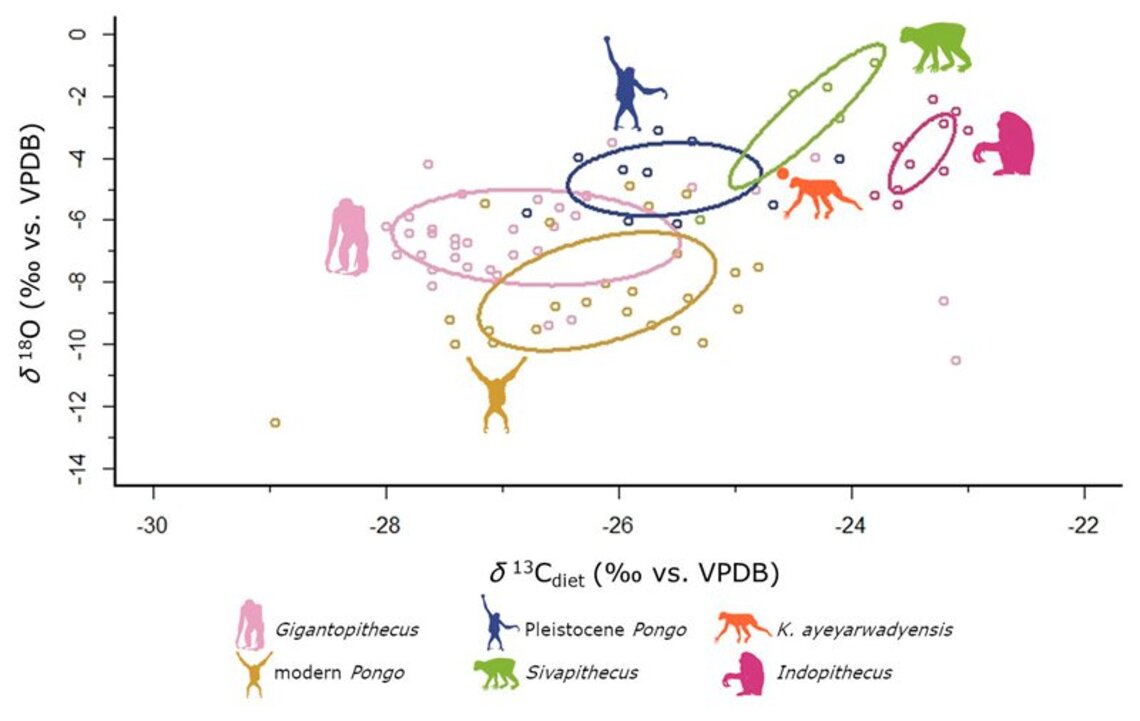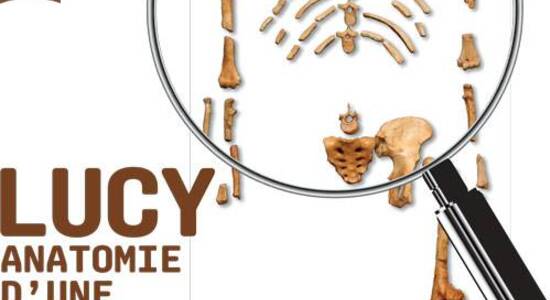Publication : Evolutionary ecology of Miocene hominoid primates in Southeast Asia
Publié par Laboratoire PALEVOPRIM, le 22 juillet 2022 760
Evolutionary ecology of Miocene hominoid primates in Southeast Asia
The evolutionary history and palaeoecology of orangutans remains poorly understood until today. The restricted geographic distribution of extant Pongo indicates specific ecological needs. However, it is not clear whether these needs were shared by the great diversity of fossil pongines known from the Miocene to the Pleistocene. Here we show how niche modelling of stable carbon and oxygen isotope data of the carbonate fraction of dental enamel can be used to reconstruct the paleoecology of fossil and modern pongines and associated mammal communities. We focus on Khoratpithecus ayeyarwadyensis, a Late Miocene pongine from Myanmar and the sister clade to extant orangutans, and compare it to its associated mammal fauna and other fossil and extant pongines. The results are consistent with a vertical position high up in the canopy of a forested habitat with purely C3 vegetation for K. ayeyarwadyensis as well as the contemporaneous Sivapithecus. Although their positions in the modelled isotopic niche space look similar to the ecological niche occupied by modern Pongo, a comparison of the modelled niches within the pongine clade revealed possible differences in the use of microhabitats by the Miocene apes.
Références
Habinger S. G., Chavasseau O., Jaeger J.-J., Chaimanee Y., Soe A. N., Sein C., Bocherens H. 2022 – Evolutionary ecology of Miocene hominoid primates in Southeast Asia – Sci Rep 12, 11841 (2022). https://doi.org/10.1038/s41598...




